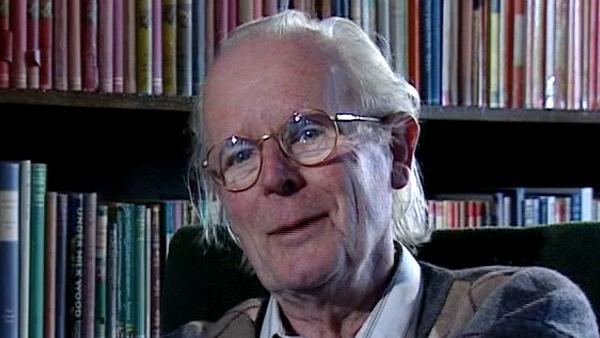NEXT STORY

Peter Medawar: 'He smiles and smiles and is a villain'
RELATED STORIES

NEXT STORY

Peter Medawar: 'He smiles and smiles and is a villain'
RELATED STORIES


|
Views | Duration | |
|---|---|---|---|
| 21. Comparative anatomy at UCL | 1 | 1001 | 02:01 |
| 22. Peter Medawar: 'He smiles and smiles and is a villain' | 2 | 1613 | 04:23 |
| 23. JBS Haldane | 1 | 1798 | 01:41 |
| 24. JBS Haldane's major work | 1 | 1555 | 01:41 |
| 25. Haldane and the motor car | 1 | 1779 | 02:45 |
| 26. JBS Haldane's trouble with personal relationships | 1666 | 03:43 | |
| 27. Helen Spurway | 1097 | 01:30 | |
| 28. The ethologists: Tinbergen and Lorenz | 1267 | 03:02 | |
| 29. Courtship behaviour in Drosophila | 821 | 04:05 | |
| 30. The idea of sexual selection | 2 | 1013 | 01:22 |


What I hadn't realised when I went was how much of the zoology degree was going to consist of comparative anatomy, is the Parasphenoid homologous to the Vomer, I mean, this kind of crap. I... it took me a bit of time to realise what rubbish it all was. I can remember quite well, actually, the moment, and it must have been towards the end of my second year, when I finally decided that comparative anatomy is nonsense. And I was sitting in the... in the library revising for an examination, reading a great big fat book by a lady called Libbie Hyman, called - it was all about the invertebrates, and you... you know, if you were a really good student you had to know Libbie Hyman. And I was reading about the coelenterates, you know, hydra and those guys. And at the beginning, there was this definition of what, morphologically, the coelenterates have to have, and they have to have a mouth but no anus. Well, that's clear enough, food goes in one end, comes out the same hole, can't go out the back, everybody knows what that means. And I thought: Well that's understandable. And then I came to some group which were classified as coelenterates, which actually, the food went right through and came out at a hole in the back. And then it said, 'But this is not a real anus.' I remember sitting there saying, 'This is a dishonest branch of science, if they come across a fact that doesn't fit their classification, they just tell lies about it.' So, I think the comparative anatomy part of it was rather a waste of time, though DMS Watson's lectures were marvellous, actually. He was one of those people who could talk without notes, in perfect prose, elegantly, intelligently. He was lovely to listen to, a lovely man. But most of the course was a waste of time except for... for Haldane and Helen Spurway, his wife, who taught genetics and a bit of behaviour and so on, which, you know, I've lived on ever since.
The late British biologist John Maynard Smith (1920-2004) is famous for applying game theory to the study of natural selection. At Eton College, inspired by the work of old Etonian JBS Haldane, Maynard Smith developed an interest in Darwinian evolutionary theory and mathematics. Then he entered University College London (UCL) to study fruit fly genetics under Haldane. In 1973 Maynard Smith formalised a central concept in game theory called the evolutionarily stable strategy (ESS). His ideas, presented in books such as 'Evolution and the Theory of Games', were enormously influential and led to a more rigorous scientific analysis and understanding of interactions between living things.
Title: Comparative anatomy at UCL
Listeners: Richard Dawkins
Richard Dawkins was educated at Oxford University and has taught zoology at the universities of California and Oxford. He is a fellow of New College, Oxford and the Charles Simonyi Professor of the Public Understanding of Science at Oxford University. Dawkins is one of the leading thinkers in modern evolutionary biology. He is also one of the best read and most popular writers on the subject: his books about evolution and science include "The Selfish Gene", "The Extended Phenotype", "The Blind Watchmaker", "River Out of Eden", "Climbing Mount Improbable", and most recently, "Unweaving the Rainbow".
Tags: Hyman's comparative vertebrate anatomy, Libbie Hyman, DMS Watson, JBS Haldane, Helen Spurway
Duration: 2 minutes, 2 seconds
Date story recorded: April 1997
Date story went live: 24 January 2008